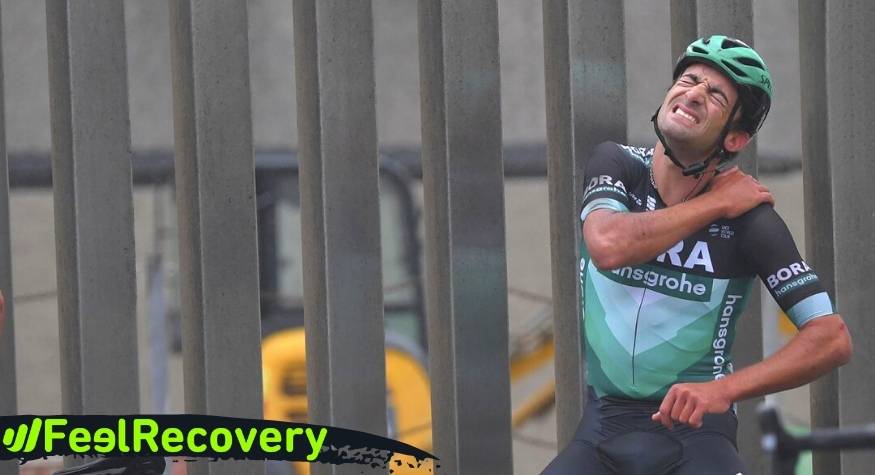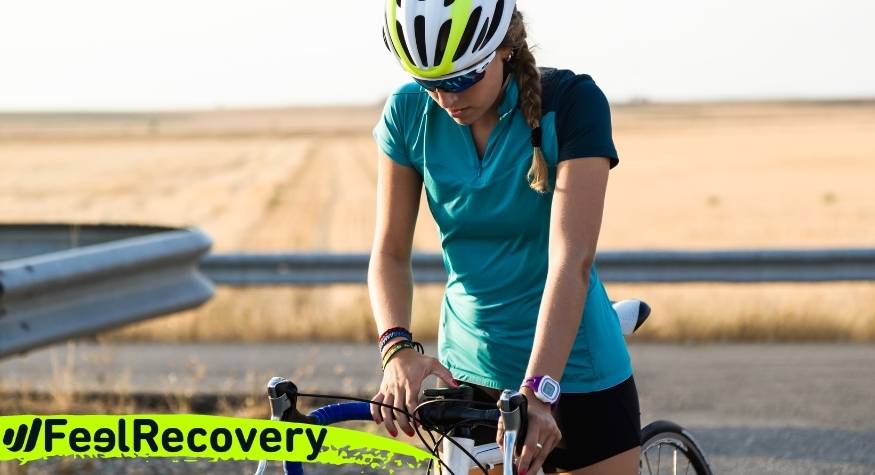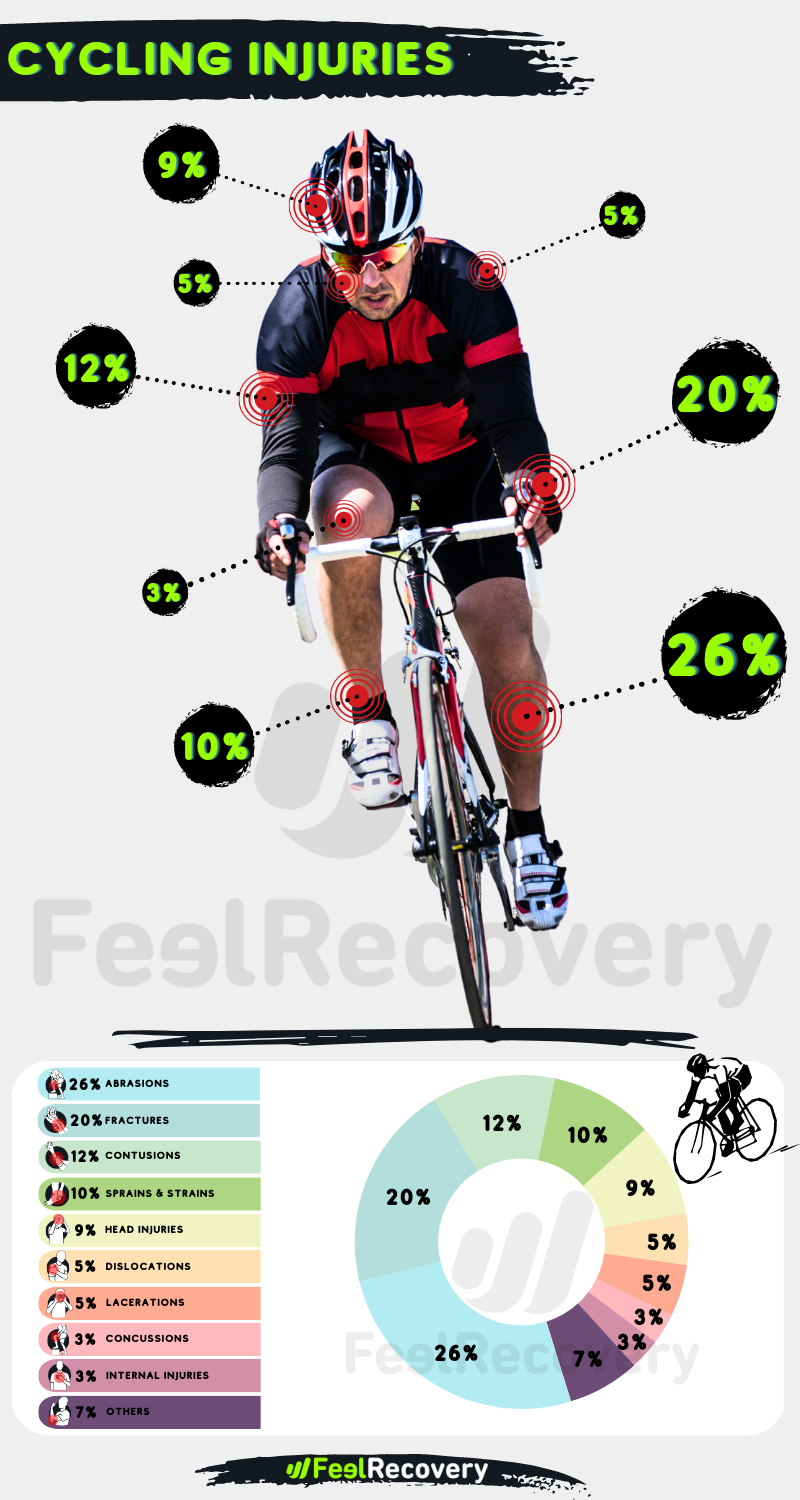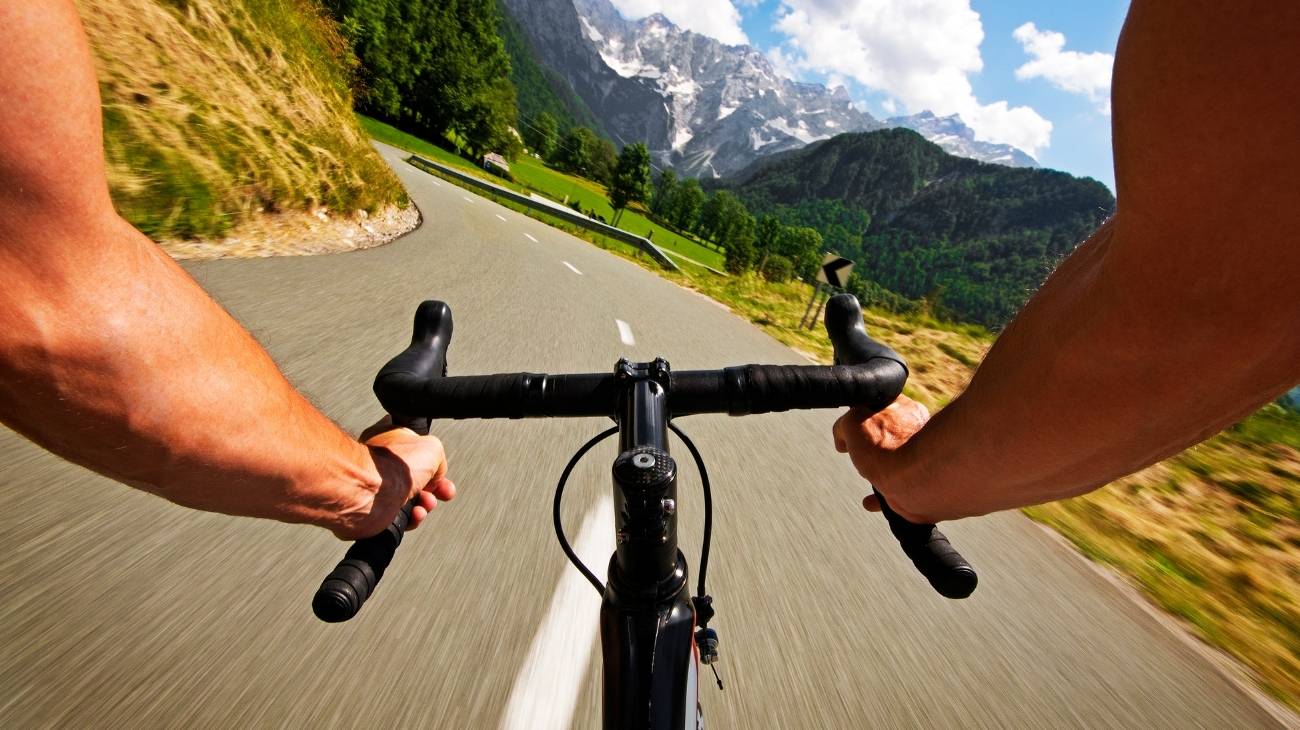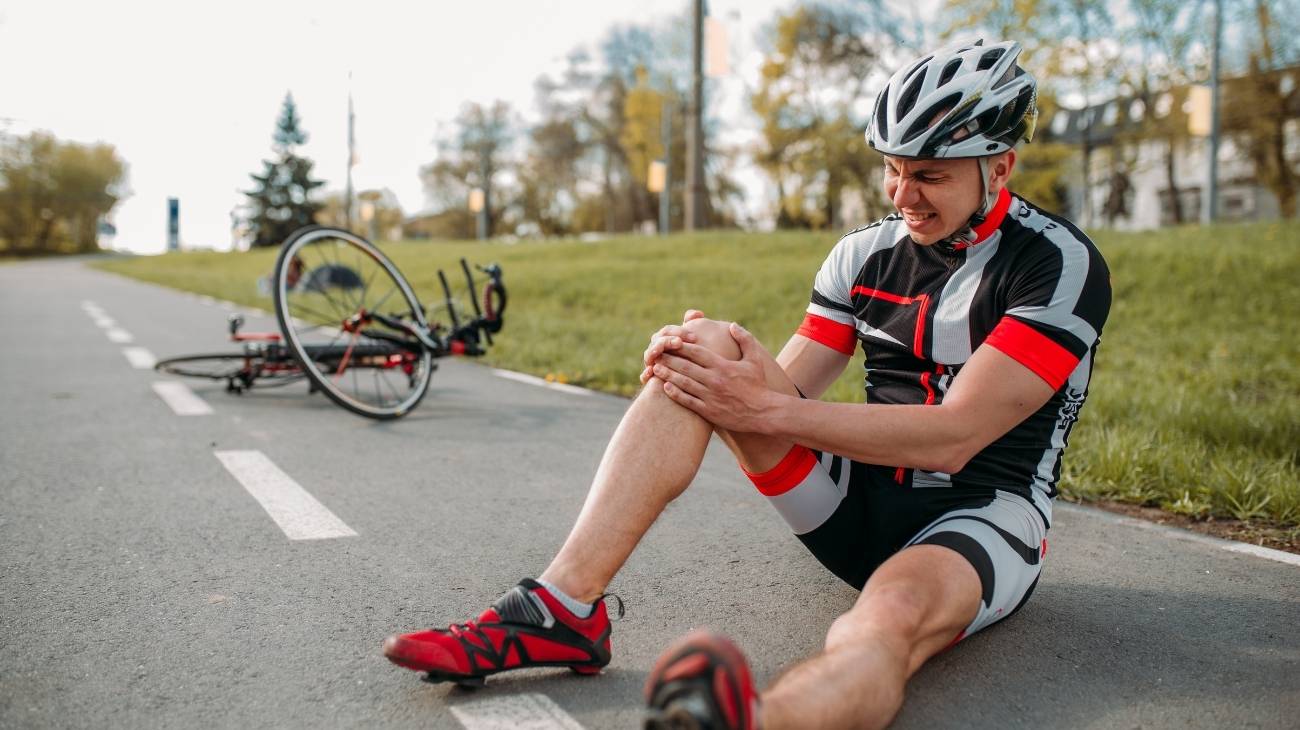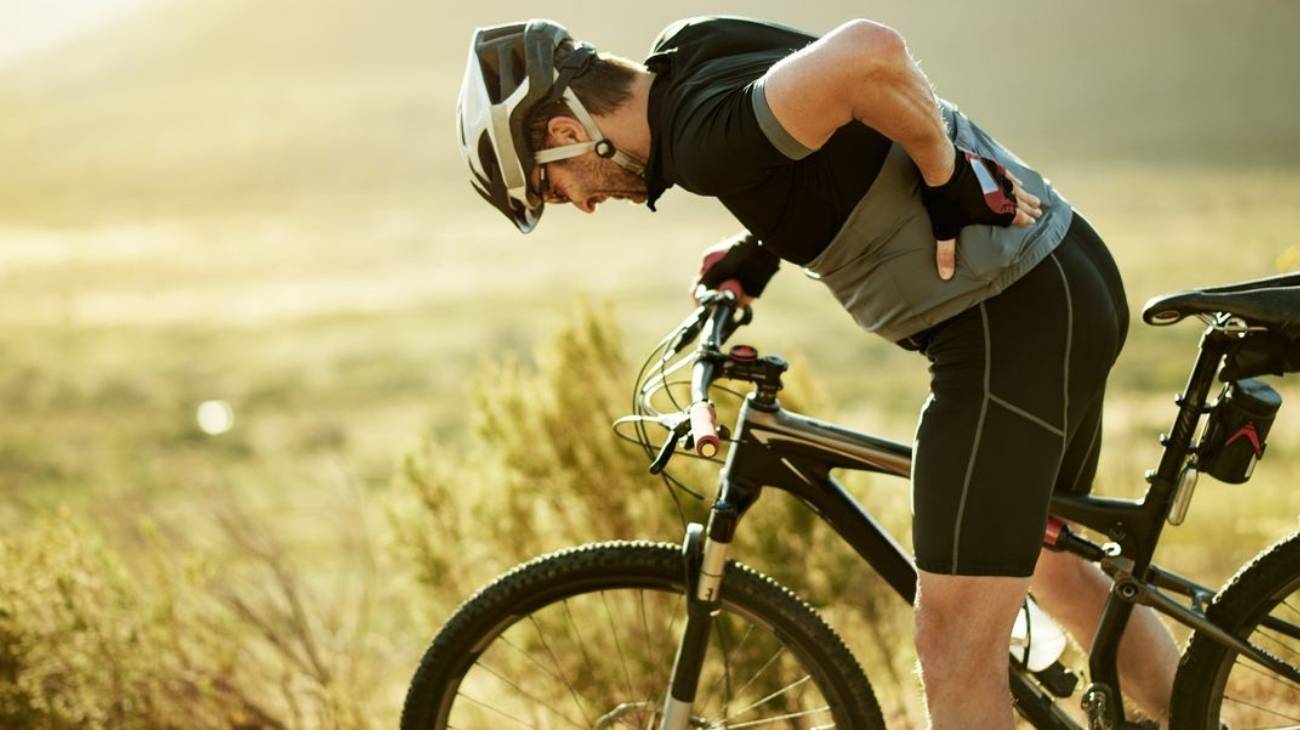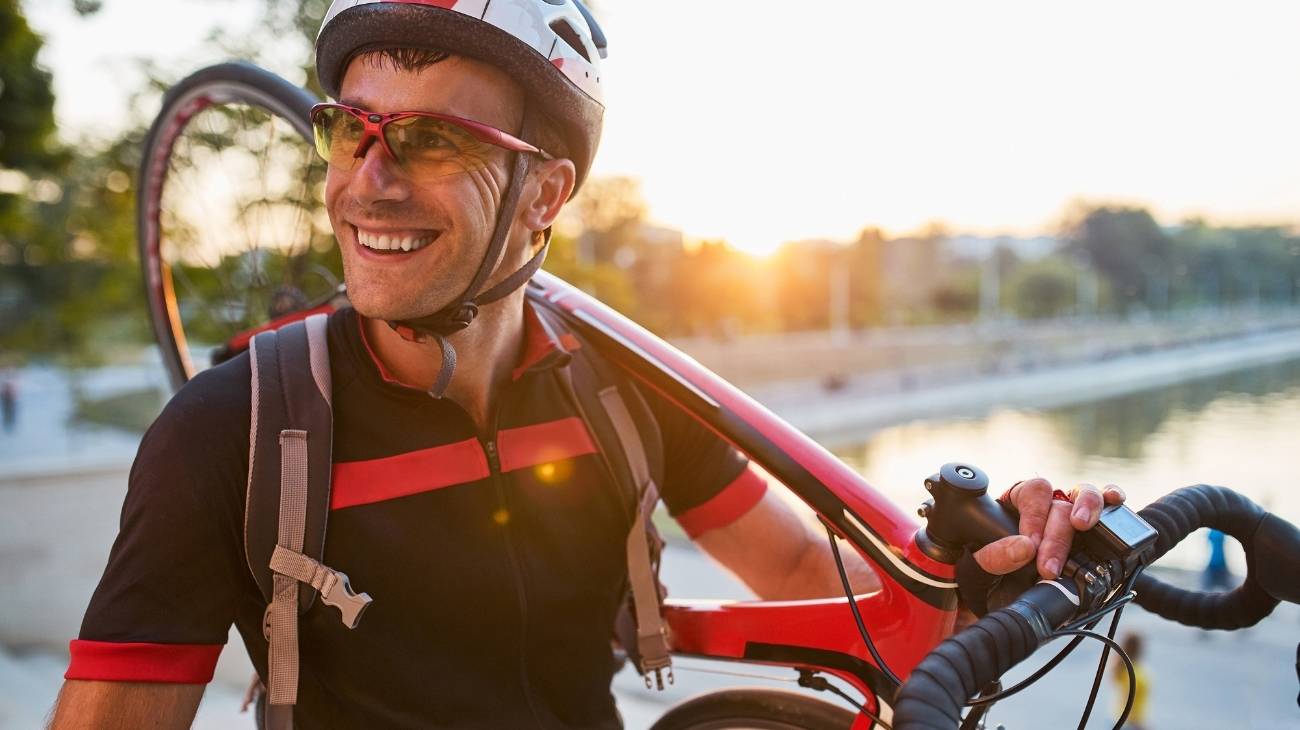In the world of cycling we can suffer countless injuries, most of them minor and can be solved with a little physiotherapy and rest, but when these treatments fail we have to face the dreaded scalpel and enter the operating theatre to fix them.
In this article you will find out what are the most common types of injuries, and the surgical procedures that a cyclist may be forced to resort to when these injuries cannot be cured by natural means.
What are the most common types of cycling injuries and pains?
Riding a bike that doesn't suit your build is the main reason why your body suffers and gets injured in the short, medium and long term. Every bike has the possibility to adjust to your size, no matter if you are very short or very tall, what will always be important is that you are comfortable and prepared to pedal without suffering injuries like the ones we show you below.
- Mononeuropathy: This is damage to a single nerve, in the case of cycling the ulnar nerve that runs from the shoulder to the hand. This nerve helps in the movement of the arm itself, as well as the movement of the wrist and fingers. It is generated by an overload of force when gripping the handlebars, either by the cyclist's weight or by holding the hand closed with too much pressure. It starts with a tingling in the hand and is solved with rest and finger exercises.
- Lower back pain: In the average person, lower back pain is due to problems in the musculoskeletal system, but in a cyclist it is due to asymmetries in the legs or asymmetrical pedalling force. Perhaps the saddle is too high or the pain is caused by wear and tear on the knee. When the knee muscles are exhausted, the body leans more forward and there is more pressure on the lower back.
- Pudenal nerve neuralgia: This condition is characterised by chronic pain in the pudenal nerve that connects the perineum and genitals. When the pain begins, the configuration of the bicycle saddle should be checked to improve the position of the spine. It may also be associated with pelvic dysfunction that the athlete or coach has not detected.
- Cyclist's knee: This is an injury to the patellofemoral joint, which lies between the kneecap and the femur. Rest alone is not enough, physiotherapeutic treatment must be used to retrain the muscles. In more severe cases, injected anti-inflammatory drugs are used.
- Hot foot: This is a syndrome that is felt on the sole of the foot, the back of the foot, including the ankle and the back of the leg. It is caused by compression of the nerves against the metatarsals due to poor foot contact with the pedal. As we have already mentioned, it is solved by changing the position of the body.
- Chondromalacia patellae: This is a wear and tear that occurs in the patellar cartilage, due to pressure between the patella and the femur. As the kneecap moves slightly to the outer side, the inner part becomes inflamed due to the pressure on the kneecap. With this injury comes severe pain in the front of the knee, a feeling of stiffness and a difficulty in extending the knee. It is caused by the repetitive motion of pedalling for long distances.
- Cervical overload: It starts as discomfort, then a mild pain that can become chronic. It is due to the cyclist's effort to maintain the same position. It is the excessive strain on the neck area, especially on the nerves, muscles and vertebrae in the cervical area. Although it may seem complex, the cyclist should spend most of his time relaxed on the saddle, the tension in the body is the origin of this ailment.
Best products for cycling injury recovery
Bestseller
-
2 Calf Compression Sleeve (Black/Gray)
£17,50 -
2 Calf Compression Sleeve (Green/Navy)
£17,50 -
2 Calf Compression Sleeve (Pink/Bordeaux)
£17,50 -
2 Knee Compression Sleeve (Black/Gray)
£17,50 -
2 Knee Compression Sleeve (Green/Navy)
£17,50 -
2 Knee Compression Sleeve (Pink/Bordeaux)
£17,50 -
2 Patella Knee Strap (Black/Gray)
£12,95 -
2 Patella Knee Strap (Green/Navy)
£12,95 -
2 Patella Knee Strap (Pink/Bordeaux)
£12,95 -
2 Thigh Compression Sleeve (Black/Gray)
£17,50 -
2 Thigh Compression Sleeve (Green/Navy)
£17,50 -
2 Thigh Compression Sleeve (Pink/Bordeaux)
£17,50 -
Acupressure Mat and Pillow (Black/Gray)
£44,95 -
Acupressure Mat and Pillow (Green/Navy)
£44,95 -
Acupressure Mat and Pillow (Pink/Bordeaux)
£44,95 -
Acupressure Pillow (Black/Gray)
£21,52 -
Acupressure Pillow (Green/Navy)
£21,52 -
Acupressure Pillow (Pink/Bordeaux)
£21,52 -
Foot Massage Roller for Plantar Fasciitis (Black)
£17,50 -
Foot Massage Roller for Plantar Fasciitis (Green)
£17,50 -
Foot Massage Roller for Plantar Fasciitis (Pink)
£17,50 -
High Density Foam Roller for Muscle (Black/Gray)
£24,95 -
High Density Foam Roller for Muscle (Green/Navy)
£24,95 -
High Density Foam Roller for Muscle (Pink/Bordeaux)
£24,95 -
Ice Massage Roller Ball (Black)
£34,95 -
Ice Massage Roller Ball (Green)
£34,95 -
Ice Massage Roller Ball (Pink)
£34,95 -
Microwaveable Wheat Bag for Pain Relief (Hearts)
£17,50 -
Microwaveable Wheat Bag for Pain Relief (Oxford)
£17,50 -
Microwaveable Wheat Bag for Pain Relief (Sport)
£17,50 -
Pack 2 in 1: Foam Roller High + Soft Density (Black/Gray)
£24,95 -
Pack 2 in 1: Foam Roller High + Soft Density (Green/Navy)
£24,95 -
Pack 2 in 1: Foam Roller High + Soft Density (Pink/Bordeaux)
£24,95 -
Soft Density Foam Roller for Recovery (Black)
£24,95 -
Soft Density Foam Roller for Recovery (Green)
£24,95 -
Soft Density Foam Roller for Recovery (Pink)
£24,95 -
Sport Compression Socks (1 Pair) (Black/Gray)
£17,50 -
Sport Compression Socks (1 Pair) (Green/Navy)
£17,50 -
Sport Compression Socks (1 Pair) (Pink/Bordeaux)
£17,50 -
Trigger Point Massage Stick (Black)
£12,95 -
Trigger Point Massage Stick (Green)
£12,95 -
Trigger Point Massage Stick (Pink)
£12,95
How to apply the RICE therapy to treat first aid cycling injuries?
There are many ways to get injured and believe that it will be something very temporary, but not paying enough attention to it can seriously affect the joints until recovery is slower and slower. That's why you need to know how to apply the PRICE therapy for cycling first aid.
- Protection: It must be detected that there is a possibility of injury and the best thing to do is to stop the activity and gently bandage the area. This prevents our natural movements from damaging the tissues further. Common bandages, orthoses and splints are used if necessary.
- Rest: More than "doing nothing", this means staying calm and not making sudden movements so that the tissues have a chance to regenerate on their own without the need for medication or invasive interventions. In the medium and long term, you can do light exercises recommended by your specialist, as long as there is a favourable evolution of the injury.
- Ice: This therapy uses cold to regulate the amount of blood that passes through the injury, so that the pain, oedema and inflammation gradually subside. Remember that the PRICE therapy is only recommended in cases of soft tissue injuries.
- Compression: There are elastic bandages that are ideal to help reduce pain and swelling, but they should not be used to try to hide muscle discomfort. The purpose is to decrease the blood supply to the injured area. We should not put too much pressure on it, we do not want to completely block the blood flow.
- Elevation: Combined with compression and ice, you are sure to be able to control the injury when it is mild. It is about raising the leg or arm above the level of the heart, so we use gravity as an ally to attack the pain and inflammation.
Surgical treatments to cure serious or chronic injuries in cyclists
Whether it is because we did not pay attention to the ailment, because the injury was chronic from the start, or because we received poor primary care, there are injuries that will require surgical treatment.
Shoulder and arm injuries
Injuries to this limb are usually minor and rarely require hospitalisation for surgery, but when non-invasive treatments fail, surgery is inevitable.
- Carpal Tunnel Release: Carpal Tunnel Syndrome is the most common mononeuropathy, when it is not possible to circumvent an operation. With this operation, the ligament covering the carpal tunnel is cut to relieve tension and pain.
- Rotator cuff repair: This is an open operation, in which stretches of tendon are removed or any damage to the muscle and ligament bundle of the rotator cuff is repaired. If ligaments need to be replaced with grafts, fixation instruments such as screws or pins are often used.
Lower back and lumbar injuries
Lower back injuries are among the most common because of the constant strain these muscles are subjected to on every ride. When they are not treated or conventional treatments fail, surgery is the only alternative to improve the athlete's quality of life.
- Operation for lumbar injury: This is only undertaken when the signs of pain and discomfort have been ignored for several months. The operation is performed when the compression of the nerves no longer allows a healthy sporting life. It is an open and complex operation that involves risks such as damage to the vertebrae.
- Microdiscectomy: A small incision is made in the back of the neck to preserve the natural movement of the vertebrae. It is an operation that also carries risks, which is why it is important to pay attention to signs of pain from the beginning.
Knee and leg injuries
The legs do more than half of the work on the bike, so it is normal that such wear and tear affects them in such a way that at some point surgery is required to solve a problem.
- Operation for tendonitis in the knee: This is an operation to release the tension of the tendons connected to the kneecap, which can be done by arthroscopy, but if the damage is too great it is possible to repair the patellar tendon with an open operation.
- Operation for chondromalacia patellae: After physiotherapy and injection of platelet-rich plasma, there should be a significant improvement. If the discomfort persists, then open surgery is performed to try to repair the damaged cartilage, although a less invasive option such as arthroscopy is often chosen.
References
- Cohen, G. C. (1993). Cycling injuries. Canadian Family Physician, 39, 628. https://www.ncbi.nlm.nih.gov/pmc/articles/PMC2379777/
- Wanich, T., Hodgkins, C., Columbier, J. A., Muraski, E., & Kennedy, J. G. (2007). Cycling injuries of the lower extremity. JAAOS-Journal of the American Academy of Orthopaedic Surgeons, 15(12), 748-756. https://journals.lww.com/jaaos/Abstract/2007/12000/Cycling_Injuries_of_the_Lower_Extremity.8.aspx
- Mellion, M. B. (1991). Common cycling injuries: management and prevention. Sports Medicine, 11, 52-70. https://link.springer.com/article/10.2165/00007256-199111010-00004
- Mulvaney, C. A., Smith, S., Watson, M. C., Parkin, J., Coupland, C., Miller, P., ... & McClintock, H. (2015). Cycling infrastructure for reducing cycling injuries in cyclists. Cochrane database of systematic reviews, (12). https://www.cochranelibrary.com/cdsr/doi/10.1002/14651858.CD010415.pub2/full
- Sanner, W. H., & O'Halloran, W. D. (2000). The biomechanics, etiology, and treatment of cycling injuries. Journal of the American Podiatric Medical Association, 90(7), 354-376. https://japmaonline.org/view/journals/apms/90/7/87507315-90-7-354.xml
- Kotler, D. H., Babu, A. N., & Robidoux, G. (2016). Prevention, evaluation, and rehabilitation of cycling-related injury. Current sports medicine reports, 15(3), 199-206. https://journals.lww.com/acsm-csmr/Fulltext/2016/05000/Prevention,_Evaluation,_and_Rehabilitation_of.18.aspx
- Aldred, R. (2016). Cycling near misses: Their frequency, impact, and prevention. Transportation Research Part A: Policy and Practice, 90, 69-83. https://www.sciencedirect.com/science/article/pii/S0965856416303639
- Kronisch, R. L. (1998). Mountain biking injuries: fitting treatment to the causes. The Physician and sportsmedicine, 26(3), 64-70. https://www.tandfonline.com/doi/abs/10.1080/00913847.1998.11440349
- Hollingworth, M. A., Harper, A. J., & Hamer, M. (2015). Risk factors for cycling accident related injury: The UK Cycling for Health Survey. Journal of Transport & Health, 2(2), 189-194. https://www.sciencedirect.com/science/article/abs/pii/S221414051500002X
- Embree, T. E., Romanow, N. T., Djerboua, M. S., Morgunov, N. J., Bourdeaux, J. J., & Hagel, B. E. (2016). Risk factors for bicycling injuries in children and adolescents: a systematic review. Pediatrics, 138(5). https://publications.aap.org/pediatrics/article-abstract/138/5/e20160282/60425/Risk-Factors-for-Bicycling-Injuries-in-Children

